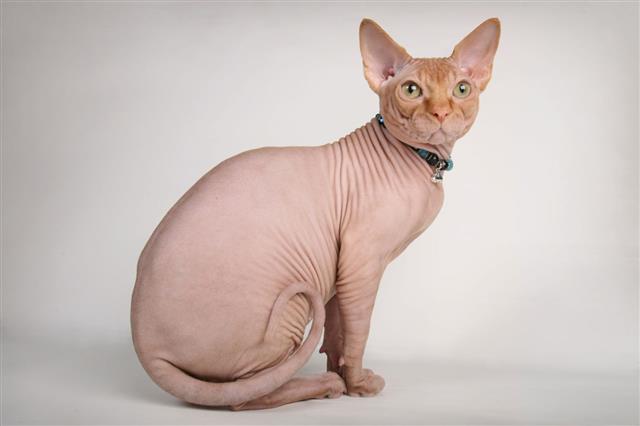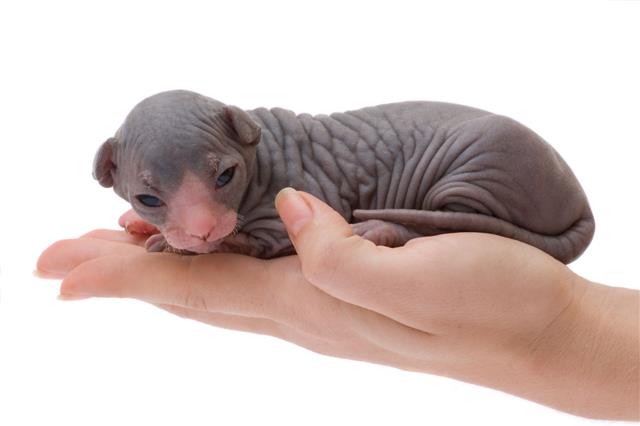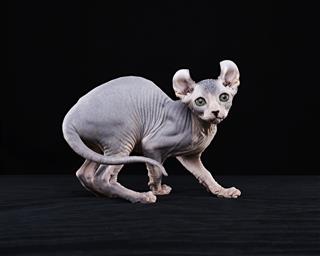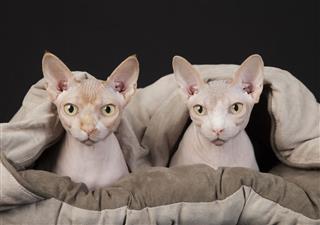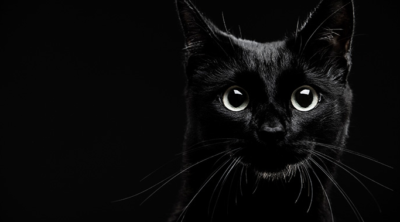
Strikingly original, your Sphynx is like no other cat out there; well, it surely doesn’t resemble any furry feline by a long shot. CatAppy tells you how to take care of your Sphynx cat.
Sphynx cats have varying levels of ‘hairlessness’.
They actually do! Some have a scant layer of fine hair and feel like a fuzzy peach when touched. Others have hair on their ears or toes, whereas a few others are entirely hairless.
Cats have always enjoyed a reputation of being independent and hassle-free pets. In fact, cat parents vouch for their scant needs, making them an ideal pet for urban busybodies.
And then come the Sphynx cats, to dispel all that you knew or assumed cats to be like. They’re virtually hairless, need dedicated, weekly grooming sessions, and are quite the chatterboxes, with some of them getting quite surly if left alone all day.
Rest assured, the Sphynx is unlike any other cat, in the sense that they do depend on you for a lot of their basic needs, owing to their physical makeup. If you’re looking for a mind-his-own-business kind of a pet cat, this is your cue to exit. If not, here’s all you need to know about grooming and caring for this rather unique pet.
What is an ideal living space for a Sphynx?
It is often recommended that cats be kept indoors to ensure their physical well-being, but it is more of a rule in case you have a Sphynx. This is because their skin is sensitive, and can get damaged due to spending too much time in the sunlight. These cats are happy living indoors, be it an apartment or a villa. Your house should be warm enough for this breed, given that they do not have a layer of fur protecting them from the elements.
What do they like to eat?
Cats are notoriously finicky eaters, and yours may be one of them. The Sphynx, in particular, has a fast rate of metabolism compared to others in the cat family, and requires small meals of kibble throughout the day. Some parents advocate the inclusion of raw meats in their pet’s diet; if you’re doing so, ensure that you properly mince the meat before feeding her. Still not sure? Your breeder or vet will be in the best position to recommend the right diet for your cat.
How to bathe them?
Cats are probably wired to hate water, and go to great lengths to avoid it. Furry cats are expert groomers, which negates the need to bathe them as often. But the Sphynx, being hairless, is not habituated to self-grooming. Due to the lack of fur, the natural oils secreted by the skin stay on the surface, attracting dirt and dust, and stains everything the cat comes in contact with.
This obviously calls for weekly bathing sessions, which may or may not be something you look forward to, depending on your cat’s outlook towards it. Some do enjoy it immensely, whereas some simply try to murder you in cold blood while you’re at it.
- Begin with the right water temperature―neither too hot, nor too cold. A few baths, and you should get this right.
- Very gently place your cat in the tub; the water level should be low enough so that she doesn’t drown.
- Pour water over her at a slow pace, and keep petting her only if it helps her relax (it may not).
- Lather up the shampoo (use the one specifically formulated for Sphynx cats) and spread it over her body. Be careful to avoid her ears and eyes.
- Pour water gently again to rinse off the product. Gentle, encouraging words can help here.
- Once this is done, pick her up and place her in a soft absorbent towel or cloth and pat dry. No vigorous rubbing is allowed at all.
- That’s it! Your kitty deserves a treat as a part of positive reinforcement.
Cleaning your cat’s ears
Sphynxes lack hair around the ear canal, making it susceptible to dust deposits. Plus, you’ll also find that their ear canals produce quite the amount of wax which can stain your upholstery and clothing, if left unclean. Also, it may block the ear canal, leading to hearing impairment in your cat. Cleaning the ear requires a soft cloth or a wet wipe that you gently need to swipe in your pet’s ear, preferably after a bath. Following this, take a Q-tip, and very gently, clean the inner part of the ear. Do so with extremely gentle hands, lest you hurt your cat. Your vet may recommend the use of a ear cleanser formulated for Sphynxes. Do not use cleansers meant for humans without consulting the vet.
Clipping the nails
No fur on the feet as well, which means a lot of dirt (and cat poop) does get lodged in between their nails. Which of course, need to be clipped. Remember to ask your vet to do this initially, if you aren’t aware of how to do this, as you may end up clipping the blood vessels, and causing grave injury. Using a cat nail clipper, carefully clip only the sharp tips of the nails, without going close to the nail bed. This needs to be done every two weeks.
Keeping your pet warm
Contrary to all the cutesy cat memes doing the rounds of the Internet, these cats do not like to be clothed. Parents often make the mistake of clothing their Sphynx cats with the purpose of keeping them warm. This is certainly ill-advised, as it tends to confuse the cat to no end, and makes them rather uncomfortable. If you live in cold climes, you will have to keep the heater on even when you’re not in the house, so as to keep it comfortable for the cat. Alternatively, you may want to buy a heated igloo for your cat to snuggle in or sleep.
Speaking of sleep, Sphynxes are legendary snugglers, and love to curl up with their owners at bedtime. Potential owners, be warned that waking up and getting to work the next day will be tough with a cuddly cat in bed with you.
Providing companionship
Every feline has its individual characteristics, irrespective of the breed they belong to. These cats, however, are known to revel in human company, unlike the rest of the breeds. Leaving them alone for a large part of the day may not go down well with some of them. That said, there are cats who also get used to solitary spaces, as long as their human parents devote some quality time to them each day. Play with your cat, exercise her, talk to her, and she’ll reward you with the kind of love and devoted companionship most only get from a dog.
Sphynx cats are perhaps the most difficult breeds of cats to keep around, but hey, when you’re besotted, you’re besotted. Just keep in mind that bringing a pet like this to your home will require a lot of patience, dedication, and true love.
